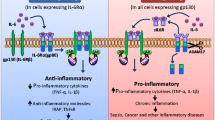Abstract
Background: Agents capable of increasing radioiodine concentration by stimulating the sodium/iodide symporter (NIS) expression have been extensively investigated for the treatment of certain well-differentiated breast cancers. Aim: In this study, we analyzed the regulation of the NIS and lactoperoxidase (LPO) gene expression in 4 different human breast cancer cell lines, representative of different histotypes of breast cancer. Methods: MCF-7, T-47D, MDA-MB231, and HCC-1937 (the latter carrying the BRCA-1 mutation) were exposed to different stimulators and the levels of NIS and LPO mRNA measured by a quantitative RT-PCR. Results: AII-trans-Retinoic Acid (RA), Dexamethasone (DEX), Trichostatin A (TSA), and Sodium Butyrate (NaB) induced the expression of NIS mRNA in MCF-7 and T-47D cell lines, whereas HCC-1937 and MBA-MB231 were slightly responsive only to the histone-deacetylase inhibitors TSA and NaB. Minor stimulatory effects were detected on LPO mRNA in MCF-7 and T-47D treated with TSA and NaB or RA only in MCF-7, while no effect was detectable in the other two cell lines. Conclusions: These data indicate that retinoic acid, alone or in combination with DEX, as well as HDAC-inhibitors are very promising agents for a radioiodine-based therapy in a large spectrum of breast cancers, including neoplasms from both basal and ductal cells, especially for the well-differentiated estrogen-dependent tumors. Other molecules or other drug combinations should be tested to extend the same strategy to the less differentiated and more aggressive tumor cells, including those carrying the BRCA mutation.
Similar content being viewed by others
References
Dai G, Levy O, Carrasco N. Cloning and characterization of the thyroid iodide transporter. Nature 1996, 379: 458–60.
Filetti S, Bidart JM, Arturi F, Caillou B, Russo D, Schlumberger M. Sodium/iodide symporter: a key transport system in thyroid cancer cell metabolism. Eur J Endocrinol 1999, 141: 443–57.
Schlumberger M, Lacroix L, Russo D, Filetti S, Bidart JM. Defects in iodide metabolism in thyroid cancer and implications for the followup and treatment of patients. Nat Clin Pract Endocrinol Metab 2007, 3: 263–9.
Kogai T, Taki K, Brent GA. Enhancement of sodium/iodide symporter expression in thyroid and breast cancer. Endocr Rel Cancer 2006, 13: 797–826.
Tazebay UH, Wapnir IL, Levy O, et al. The mammary gland iodide transporter is expressed during lactation and in breast cancer. Nat Med 2000, 6: 871–88.
Dohán O, De la Vieja A, Paroder V, et al. The Sodium/Iodide symporter (NIS): characterization, regulation, and medical significance. Endocr Rev 2003, 24: 48–77.
Bruno R, Giannasio P, Ronga G, et al. Sodium iodide symporter expression and radioiodine distribution in extra-thyroidal tissues. J Endocrinol Invest 2004, 27: 1010–4.
Etling N, Gehin-Fouque F. lodinated compounds and thyroxine binding to albumin in human breast milk. Ped Res 1984, 18: 901–3.
Charafe-Jauffret E, Ginestier C, Monville F, et al. Gene expression profiling of breast cell lines identifies potential new basal markers. Oncogene 2006, 25: 2273–84.
Ferretti E, Tosi E, Po A, et al. Notch signaling is involved in expression of thyroid differentiation markers and is downregulated in thyroid tumors. J Clin Endocrinol Metab 2008, 93: 4080–7.
Hortobagyi GN. Treatment of breast cancer. N Engl J Med 1998, 339: 974–84.
Riesco-Eizaguirre G, Santisteban P. A perspective view of sodium iodide symporter research and its clinical implications. Eur J Endocrinol 2006, 155: 495–512.
Kogai T, Kanamoto Y, Che LH, et al. Systemic retinoic acid treatment induces sodium/iodide symporter expression and radioiodide uptake in mouse breast cancer models. Cancer Res 2004, 64: 415–22.
Willhauck MJ, Sharif-Samani B, Senekowitsch-Schmidtke R, et al. Functional sodium iodide symporter expression in breast cancer xenografts in vivo after systemic treatment with retinoic acid and dexamethasone. Br Cancer Res Treat 2008, 109: 263–72.
Tanosaki S, Ikezoe T, Heaney A, et al. Effects of ligands of nuclear hormone receptors on sodium/iodide symporter expression and activity in breast cancer cells. Br Cancer Res Treat 2003, 79: 335–45.
Tomlinson GE, Chen TTL, Stastny VA, et al. Characterization of a breast cancer cell line derived from a germ-line BRCA1 mutation carrier. Cancer Res 1998, 58: 3237–42.
Kogai T, Schultz JJ, Johnson LS, Huang M, Brent GA. Retinoic acid induces sodium/iodide symporter gene expression and radioiodide uptake in the MCF-7 breast cancer cell line. Proc Natl Acad Sci U S A 2000, 97: 8519–24.
Puppin C, D’Aurizio F, D’Elia AV, et al. Effects of histone acetylation on NIS promoter and expression of thyroid-specific transcription factors. Endocrinology 2005, 146: 3967–74.
Peyrottes I, Navarro V, Ondo-Mendez A, et al. Immunoanalysis indicates that the sodium iodide symporter is not overexpressed in intracellular compartments in thyroid and breast cancers. Eur J Endocrinol 2009, 160: 215–25.
Strum JM, Phelps PC, McAtee MM. Restin human female breast tissue produces iodinated proteins. J Ultrastruct Res 1983, 84: 130–9.
Boland A, Magnon C, Filetti S, et al. Transposition of the thyroid iodide uptake and organification system in nonthyroid tumor cells by adenoviral vector-mediated gene transfers. Thyroid 2002, 12: 19–26.
Iwamoto KS. The mechanistic role of iodine in breast carcinogenesis. U.S. Army Medical Research and Materiel Command, Fort Detrick, Maryland, Award number: W81XWH-04-1-0684, 1-08-2005.
Author information
Authors and Affiliations
Corresponding author
Additional information
These authors equally contributed to the paper.
Rights and permissions
About this article
Cite this article
Sponziello, M., Scipioni, A., Durante, C. et al. Regulation of sodium/iodide symporter and lactoperoxidase expression in four human breast cancer cell lines. J Endocrinol Invest 33, 2–6 (2010). https://doi.org/10.1007/BF03346542
Accepted:
Published:
Issue Date:
DOI: https://doi.org/10.1007/BF03346542




